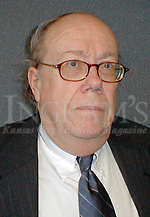Developments in Health Savings Accounts
by Richard Juncgk

The ultimate goal of a health savings account (HSA) is to encouage participants to control their health care costs through a savings plan.
The increasing cost of health insurance has become a critical issue for individuals and employers in this country. The number of uninsured people is rising even as employersstruggle to maintain quality benefit plans.Increasingly, individuals and employers are considering health savings accounts (HSA).
The ultimate goal of a health savings account (HSA) is to encourage participants to control their health care costs through a savings plan. However, an HSA also rewards those individuals that either can reduce their health care costs or, if fortunate enough, are able to limit health care costs upfront.
Although HSAs are not new, some of the new aspects of these accounts make them a more attractive investment than previous versions. For example, HSAs are solely owned by an individual even if their employer makes annual contributions to the account. Any unexpended funds in the HSA at retirement are the property of the employee only.
Even when changing jobs, an HSA puts employees in a position to take this account with them as they move on to their next business endeavor. These accounts share similarities with individual retirement accounts (IRAs) in that, if funds are not used for qualified medical expenses, the amounts withdrawn are treated as gross in-come and could be subject to a 10 percent excise tax unless withdrawn after the individual’s death, disability or attainment of the age of Medicare eligibility (currently 65).
An HSA is a tax-favored account in which the individual is covered by a plan with a high deductible. Some specific exceptions apply; however, generally speaking, to be eligible for an HSA you could not be covered by any other health plan that did not meet the definition of a high deductible health plan. If you are entitled to benefits under Medicare, you are not eligible to contribute to an HSA, nor are individuals who may be claimed as a dependent on another’s tax return.
A high deductible health plan is one that has a deductible that is a minimum of $1,000 for self-only coverage or $2,000 for family coverage. Also, its out-of-pocket expense limit cannot exceed $5,100 for self-only coverage and $10,200 for family coverage.
That HSAs can be established by self-employed or unemployed individuals also makes them appealing. In addition, an eligible individual that is an employee may establish an HSA with or
without the involvement of their employer. Or, if the employer establishes and contributes to a plan, these contributions are not treated as income to the employee.
HSA contributions must be made in cash. For 2005, the maximum HSA contribution is $2,650 for self-only coverage and $5,250 for family coverage.
Contributions made by or on behalf of an eligible individual that do not exceed the above limits are deductible by the individual in computing adjusted gross income whether or not the individual itemizes his/her deductions on their individual return. Similar to the individual retirement account, individuals who have reached age 55 may contribute an additional $600 in 2005 to their HSA.
In any given year, contributions to an HSA can be made at any time before the time prescribed by law (without extensions) for filing the federal income tax return for that year. An employer contributing to an employee’s HSA must make available comparable contributions on behalf of all employees with comparable coverage during the same period. The qualified medical expenses that can be paid from an HSA include long-term care insurance, COBRA premiums, premiums for health care coverage while an individual is receiving unemployment compensation and health insurance premiums for individuals eligible for Medicare other than premiums for Medigap policies.
When establishing an HSA for employees, employers may want to consider that the funds must be set aside in a trust fund and, therefore, cannot be forfeited. Also some employees covered by plans with lower deductibles also may be unwilling to switch to a high deductible plan. In addition, there is concern that these types of accounts may be more attractive to the younger and healthier employees, which might cause other types of coverage to become more expensive.
Certainly HSAs provide a feasible alternative to increasing health care costs that should be considered by both individuals and employers. Since the flexibility of these plans is more attractive than earlier versions, it is likely that more insurance companies will offer plans that meet these requirements. This should ultimately provide employers the flexibility, as well as the added benefit of competition between healthcare providers, when evaluating their healthcare options.
Richard Juncgk is a partner with BKD, LLP. He can be reached at (816) 221-6300 or via e-mail at djuncgk@bkd.com.